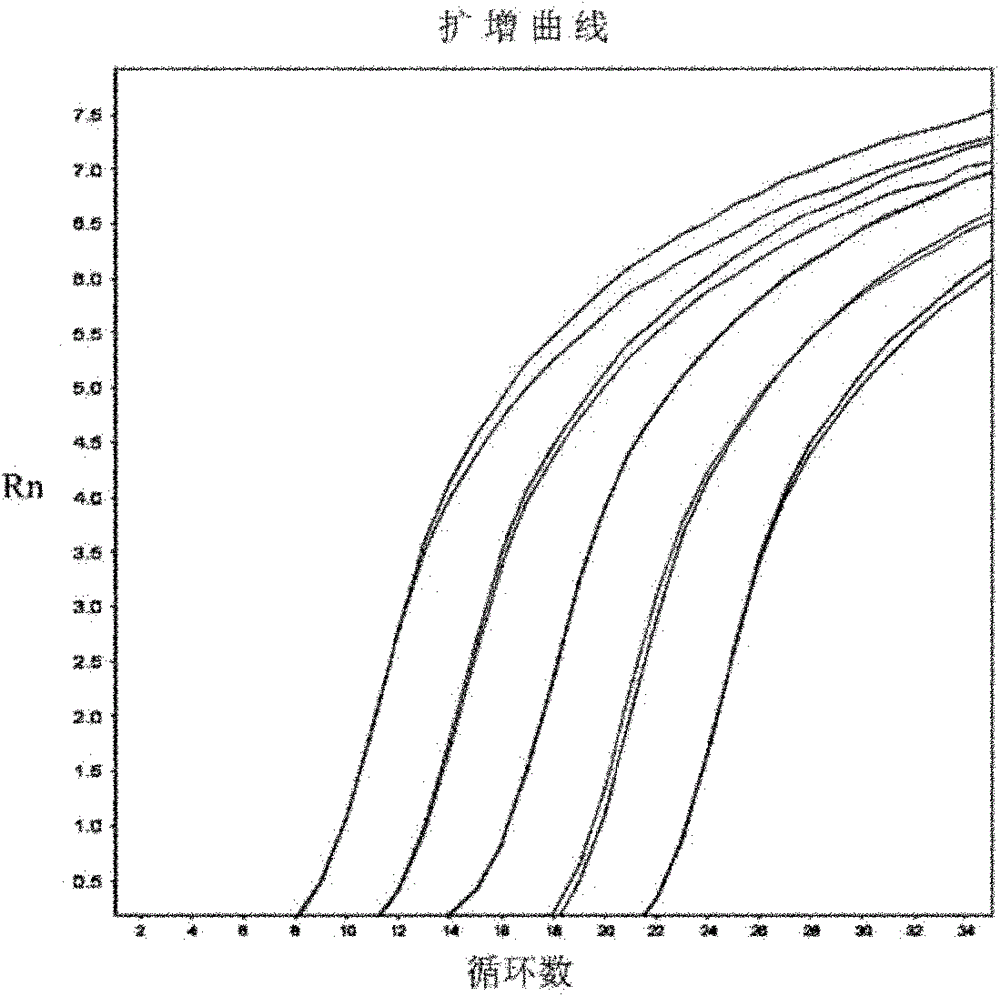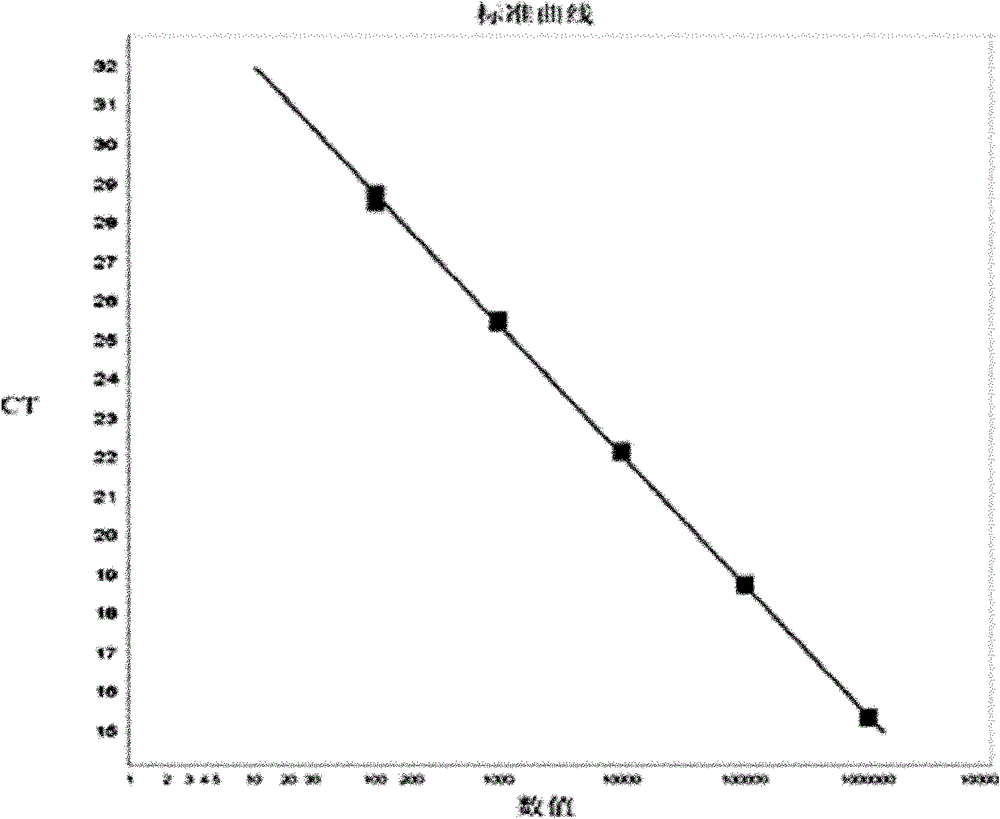Primers used for amplifying nucleotide segment of nucleocapsid protein gene of H5N1 influenza virus and detection method
An influenza virus and nucleotide technology, applied in the medical field, can solve problems such as high requirements for primers and probes, quantitative detection of unsuitable viruses, non-specific amplification, etc., and achieve small errors, good intervals, and good repeatability Effect
- Summary
- Abstract
- Description
- Claims
- Application Information
AI Technical Summary
Problems solved by technology
Method used
Image
Examples
Embodiment 1
[0031] Utilize the primer set having the upstream primer of the nucleotide sequence shown in SEQ ID NO:1 and the downstream primer with the nucleotide sequence shown in SEQ ID NO:2, take H5N1 influenza virus standard virus strain (SZ406H) as template According to the reaction system of the Power SYBR Green PCR Master Mix (ABI, 4367659) kit, quantitative amplification was carried out on a stepone 2.0 quantitative PCR instrument. Amplification curve such as figure 1 As shown, the melting curve is as figure 2 As shown, the standard curve is as image 3 shown.
[0032] Depend on figure 1 As shown, the overall parallelism of the amplification curve is good; when the template is subjected to 10-fold ratio gradient dilution, the interval of each concentration is good; the repeatability of the parallel experiment of each concentration is good. Depend on figure 2 As shown, the melting curve has a single peak, no primer peak or miscellaneous peak occurs, and the peak symmetry a...
Embodiment 2
[0036] Roche, Cat.12033674001; Ambion, AM1912; BioMIGA; Qiagen, cat.74106; Trizol invitrogen, Cat.No.15596-026 5 kits were used to extract the total RNA in the lung and intestinal tissue samples of ferrets and monkeys to be tested .
[0037] The total RNA extracted from the lung and intestinal tissues of ferrets and monkeys was reverse-transcribed with the SuperScript III First-Strand Synthesis System kit from Invitrogen to obtain cDNA.
[0038] See Table 1 for the primers recommended by WHO to detect the NP gene of H5N1 influenza virus in ferret or / and monkey tissues by common PCR and dye-based quantitative PCR.
[0039] Table 1: Primers recommended by WHO for general PCR and dye-based quantitative PCR
[0040]
[0041] The primer set designed for the H5N1 (SZ406H) NP gene (Genebank accession number: 133711835) consists of an upstream primer with a nucleotide sequence shown in SEQ ID NO: 1 and an upstream primer with a nucleotide sequence shown in SEQ ID NO: 2 Downstream...
PUM
 Login to View More
Login to View More Abstract
Description
Claims
Application Information
 Login to View More
Login to View More - R&D
- Intellectual Property
- Life Sciences
- Materials
- Tech Scout
- Unparalleled Data Quality
- Higher Quality Content
- 60% Fewer Hallucinations
Browse by: Latest US Patents, China's latest patents, Technical Efficacy Thesaurus, Application Domain, Technology Topic, Popular Technical Reports.
© 2025 PatSnap. All rights reserved.Legal|Privacy policy|Modern Slavery Act Transparency Statement|Sitemap|About US| Contact US: help@patsnap.com



